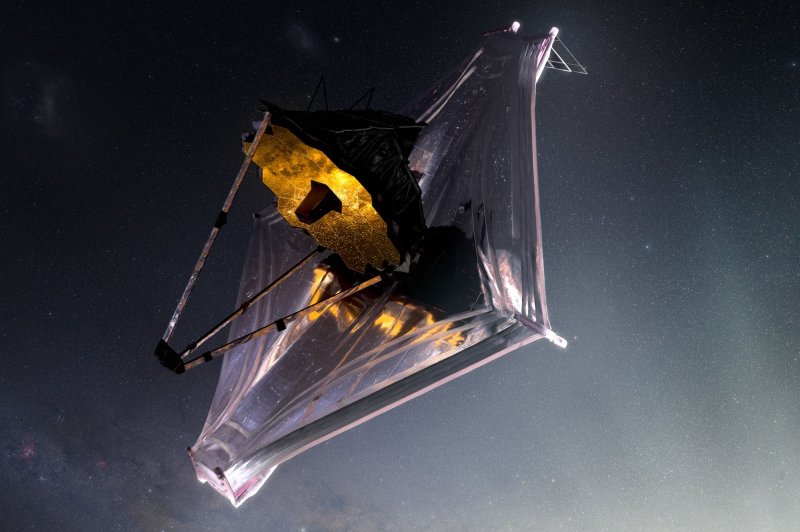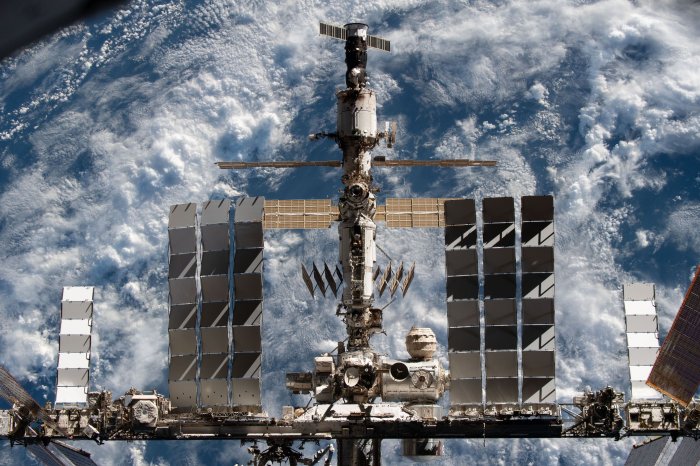1 of 6 | An artist's illustration of the James Webb Space Telescope in space. Image courtesy of NASA |
License Photo
Dec. 24 (UPI) -- NASA and the European Space Agency plan to launch the most powerful telescope ever, the James Webb Space Telescope, from South America on Christmas morning.
NASA has designed James Webb to surpass the Hubble Space Telescope with infrared vision that can peer 13.5 billion years into the universe's past -- seeing the light of the first stars and galaxies as they formed after the Big Bang.
"We will discover what we don't know, what we don't understand or what we can't fathom about our universe," NASA Administrator Bill Nelson said during a press conference Tuesday. "It's going to give us a better understanding of our universe and our place and who we are."
The new observatory, however, must first survive the violent vibration of launch atop a European Ariane 5 rocket and 29 days of the most difficult and complex in-space deployment and unfolding process ever attempted, according to NASA.
Liftoff is scheduled for a 32-minute window beginning at 7:20 a.m. EST.
James Webb's deployment is roughly three times more complex than landing a rover robotically on Mars, far more complex than any other spacecraft maneuver NASA has attempted, according to Thomas Zurbuchen, associate administrator for NASA's science missions.
A landing on Mars "takes roughly a third of the single-point failures than deploying the telescope fully, so it really is a level of complexity that's over and above," Zurbuchen said.
But he added that NASA's rigorous testing has proven the deployment can work, which is "why we're sleeping at night, just because we know these things have worked."
The two biggest priorities for the Webb telescope are to view galaxies formed about 100 million years after the Big Bang and to scope out exoplanets -- planets in other star systems -- that have atmospheres or signs of life, according to NASA. It also will examine pulsars, nebulae and other space objects.
The Webb telescope, named for NASA's second administrator, James E. Webb, is years behind schedule and billions of dollars over budget. Launching from the European Space Agency's Guiana Space Center in French Guiana is part of Europe's contribution to the project.
Astronomers all over the world are eager to use the telescope, Danny Milisavljevic, assistant professor of astronomy at Purdue University in Indiana, said in an interview. He's hosting a virtual watch party for students and others online.
"Webb will enable exciting new science opportunities that the community is hungry for," Milisavljevic said.
He plans to use the telescope to peer at a supernova remnant, Cassiopeia A, a star that exploded 340 years ago.
The new telescope "will provide vital information about how the explosion proceeded and the type of star that was originally there. It's not unlike a cosmic bomb squad investigation," he said.
Any serious problems with the telescope could doom the entire mission, since James Webb will orbit the sun 1 million miles from the Earth and from the location of Hubble -- out of the reach of any crewed spacecraft.
The International Space Station is pictured from the SpaceX Crew Dragon Endeavour during a flyaround of the orbiting lab that took place following its undocking from the Harmony module’s space-facing port on November 8. Photo courtesy of NASA
















